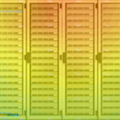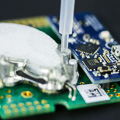Using Emoncms on a private server
 A few months ago, we explained how to configure a YoctoHub or a VirtualHub to automatically post sensor values on emoncms.org. Emoncms is a web site which allows you to store measures in the cloud and to display them prettily. There are numerous sites which offer this kind of services (either free or for a fee), but Emoncms is, to our knowledge, the only one which is Open Source and which can be installed on a private server. And this is exactly what we are going to do this week.
A few months ago, we explained how to configure a YoctoHub or a VirtualHub to automatically post sensor values on emoncms.org. Emoncms is a web site which allows you to store measures in the cloud and to display them prettily. There are numerous sites which offer this kind of services (either free or for a fee), but Emoncms is, to our knowledge, the only one which is Open Source and which can be installed on a private server. And this is exactly what we are going to do this week.
| No comment yet | Read more... |
Viewing temperature flows
 Summer is coming and, with it, heat waves that put a strain on the air conditioning of server rooms. How can we know if an air conditioner is of the right size or if it labors to cool the room and risks to fail at any time? How can we know if fresh air is distributed everywhere, or if the addition of a simple air circulator could save a few KWh?
Summer is coming and, with it, heat waves that put a strain on the air conditioning of server rooms. How can we know if an air conditioner is of the right size or if it labors to cool the room and risks to fail at any time? How can we know if fresh air is distributed everywhere, or if the addition of a simple air circulator could save a few KWh?
| No comment yet | Read more... |
How to calibrate a CO2 sensor?
 CO2 sensors are increasingly popular to monitor air quality at home and in business premises. So much so that we tend to forget that the measures are based on rather advanced technologies, requiring some precautions if we want to make sure that we obtain valid measures. So, do we need to calibrate a CO2 sensor and, if we do, how should we do it?
CO2 sensors are increasingly popular to monitor air quality at home and in business premises. So much so that we tend to forget that the measures are based on rather advanced technologies, requiring some precautions if we want to make sure that we obtain valid measures. So, do we need to calibrate a CO2 sensor and, if we do, how should we do it?
| No comment yet | Read more... |
Which altimeter to use ?
 We have two modules that can compute the altitude: the Yocto-GPS and the Yocto-Altimeter. These two modules determine the altitude with two radically different methods. Lets have a look at the advantages and disadvantages of both.
We have two modules that can compute the altitude: the Yocto-GPS and the Yocto-Altimeter. These two modules determine the altitude with two radically different methods. Lets have a look at the advantages and disadvantages of both.
| 5 comments | Read more... |
New! The Yocto-MaxiThermistor
![]() This week, we present the newest module in the range of Yoctopuce temperature sensors: the Yocto-MaxiThermistor. The ideal product if you need to measure temperature at several locations.
This week, we present the newest module in the range of Yoctopuce temperature sensors: the Yocto-MaxiThermistor. The ideal product if you need to measure temperature at several locations.
| 2 comments | Read more... |


